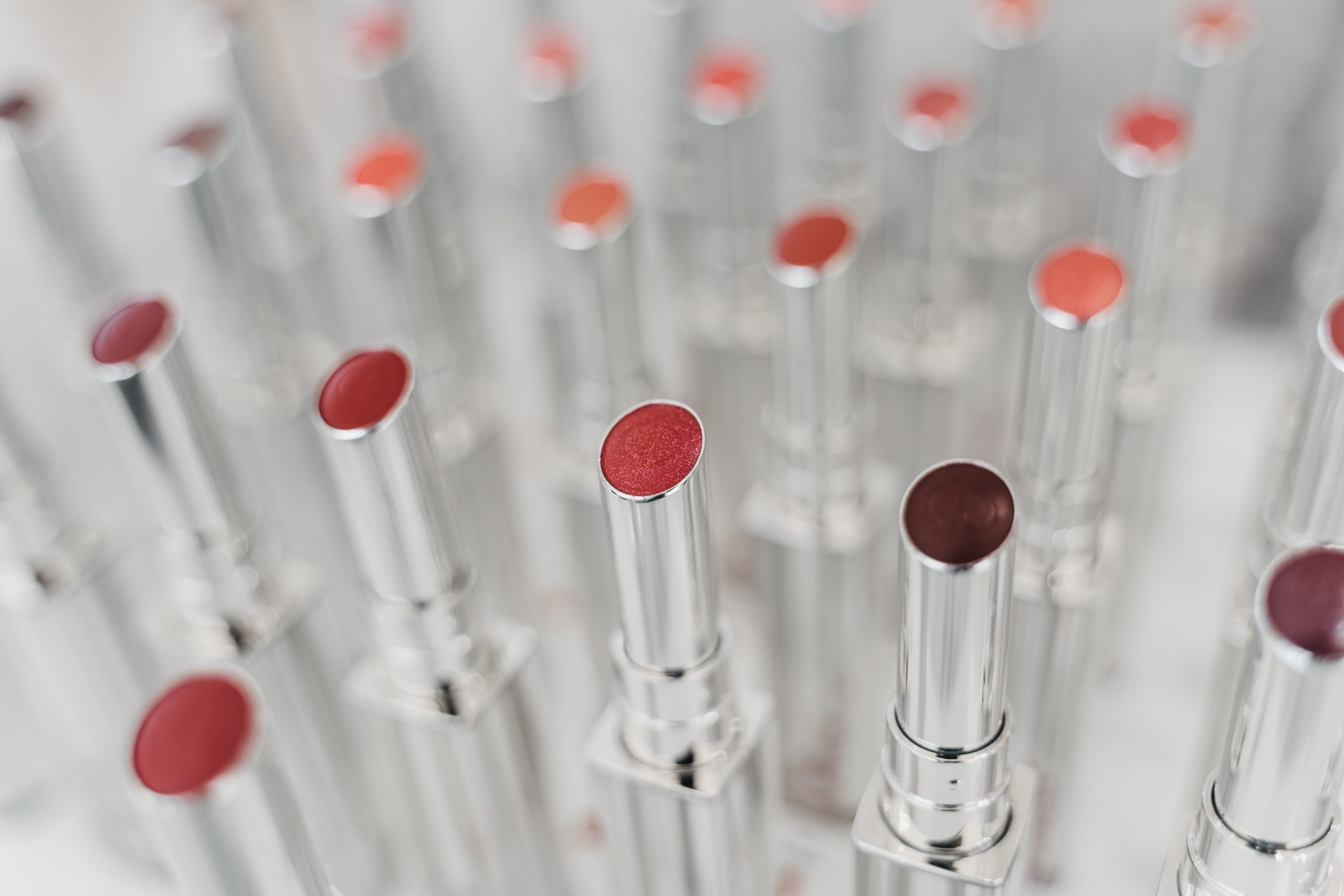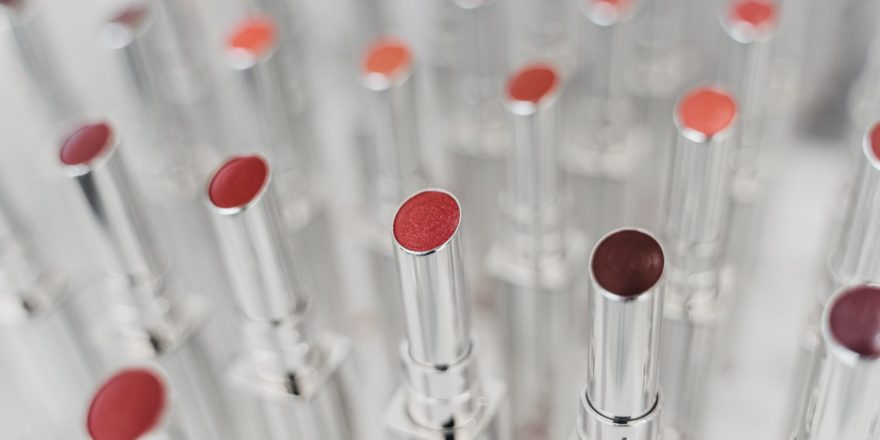We live in an environment awash with novel chemicals, and most of the time, “out of sight is out of mind”. Most manufactured chemicals are designed to be as efficient as possible, or the properties that make them excellent for one task have unforeseen actions that affect our health. Nature is full of potent chemicals that make a difference, but we’ve had millennia to adapt to them, and as part of living organisms, they’re usually less concentrated or toxic.
Endometriosis is a disease dominated by abnormally high levels of estrogens, which offers significant scope for Endocrine-Disrupting Chemicals (EDCs) to promote the development and severity of the condition.
There are currently over 1500 recognised EDCs that enter the body via our food, drinks, lungs and skin. While these can accumulate in fat tissue and persist for long periods of time, their levels can fall dramatically once avoided.
Most cosmetics and personal care products contain EDCs, of which the best known are dioxins, parabens (PB) and the benzophenone (BP) families. These chemicals have estrogenic and oxidative effects, which damage health and fertility. Estrogenic is having the action of estrogens, and oxidation is a significant cause of cell damage. Of all the cells in the body, the most vulnerable to oxidative stress are eggs and sperm because of their unusual DNA structure.
EDCs also disrupt the normal development of follicles and the function of the hypothalamus-pituitary-ovarian axis (HPO), which further reduces fertility. In women, EDC exposure results in altered ovarian and uterine structure and an increased risk of retrograde menstruation. i
External agents that raise estrogens
Exposure to EDCs is known to raise the risk of girls developing endometriosis and sexual abnormalities (and low sperm quality in boys). They also affect adult hormonal balance, but there are ways to address these issues:
- Diethylstilbestrol (DES), a potent synthetic estrogen medication, was one of the first hormonal medications given to adults and unborn children. While its use has generally been discontinued since 1971, it has affected the following generations of the women who took it.
- Bisphenol A (BPA) is an estrogenic chemical widely used to manufacture polycarbonate plastics and resins. BPA is commonly found in drinks bottles, plastic dinnerware, and coating in food cans and food packaging. It enters the body through the diet, lungs and skin, and once it’s in the body, recorded concentrations are highest in the placenta and foetus. ii
BPA disrupts DNA repair and signalling, as well as calcium regulation in cells. As far as fertility is concerned, it alters ovarian and testicular development by increasing estrogens, reducing testosterone, and lowering testosterone levels in adult men. iii
Recent evidence indicates BPA significantly affects the sexual development of baby boys, reducing their fertility and contributing to abnormal genital development.
- Phthalates are another type of EDCs commonly found in cosmetics, perfumes, hair sprays, shampoos, cleaning products and PVC plastics. Phthalates are chemicals that act against androgens, including testosterone, and they unbalance the estrogen: testosterone balance. They’re also linked to endometriosis and abnormal testis development in baby boys. iv-v Phthalates are labelled as BBP, DEP, DBP, DINP etc. and by the number 3 inside the universal recycling symbol.
- Dioxins and dioxin-like chemicals increase the risk of endometriosis by stimulating the body to increase estradiol levels and inflammation. vi-vii Dioxins are persistent organic pollutants, often due to burning or other processes that are insoluble in water but soluble in fats. Their solubility in fats leads to their accumulation in the food chain.
Reducing EDCs
Obviously, avoiding EDCs is the ideal option, which is strongly recommended for anyone trying to get pregnant. For women with endometriosis, this is particularly important due to the inflammatory and estrogen-promoting actions of EDCs.
Research indicates consuming a range of antioxidants (and herbs) is a possible way to reduce the impact of EDCs on health. This approach ties in with the advice embedded in the morefertile® personal fertility profiles (PFPs). The antioxidants that have been researched and found to improve sexual health significantly are: viii
- Melatonin
- Folic acid
- Vitamin A
- Vitamin C
- Vitamin E
- Eruca sativa
- Cordyceps militaris
- Cistanche tubulosa
- Lespedeza cuneata
- Trigonella foenum
- Naringin (flavonoid)
- Quercetin (flavonoid)
- Lycopene (carotenoid)
- Taurine (amino acid)
- Selenium
- NAC
Antioxidants are best taken as part of a healthy diet, as this helps remove toxins from the body. The immune system requires a range of these substances to maintain a healthy balance and keep oxidative stress to a minimum.

i Pivonello, C.; Muscogiuri, G.; Nardone, A.; Garifalos, F.; Provvisiero, D.P.; Verde, N.; de Angelis, C.; Conforti, A.; Piscopo, M.; Auriemma, R.S.; et al. Bisphenol A: An emerging threat to female fertility. Reprod. Biol. Endocrinol. 2020, 18, 22.
ii Jalal N, Surendranath AR, Pathak JL, Yu S, Chung CY. Bisphenol A (BPA) the mighty and the mutagenic. Toxicol Rep. 2017;5:76-84. Published 2017 Dec 16. doi:10.1016/j.toxrep.2017.12.013
iii Desdoits-Lethimonier C, et al. Parallel assessment of the effects of bisphenol A and several of its analogs on the adult human testis. Hum Reprod. 2017 Jul 1;32(7):1465-1473. doi: 10.1093/humrep/dex093. PMID: 28482050.
iv Cai W, Yang J, Liu Y, Bi Y, Wang H. Association between Phthalate Metabolites and Risk of Endometriosis: A Meta-Analysis. Int J Environ Res Public Health. 2019 Sep 30;16(19):3678. doi: 10.3390/ijerph16193678. PMID: 31574938; PMCID: PMC6801736.
v Li H, Spade DJ. REPRODUCTIVE TOXICOLOGY: Environmental exposures, fetal testis development and function: phthalates and beyond. Reproduction. 2021 Oct 5;162(5):F147-F167. doi: 10.1530/REP-20-0592. PMID: 34314370; PMCID: PMC8497445.
vi Sirohi, Diksha, Al Ramadhani, Ruqaiya and Knibbs, Luke D.. “Environmental exposures to endocrine disrupting chemicals (EDCs) and their role in endometriosis: a systematic literature review” Reviews on Environmental Health, vol. 36, no. 1, 2021, pp. 101-115. https://doi.org/10.1515/reveh-2020-0046
vii Huang, Q., Chen, Y., Chen, Q. et al. Dioxin-like rather than non-dioxin-like PCBs promote the development of endometriosis through stimulation of endocrine–inflammation interactions. Arch Toxicol 91, 1915–1924 (2017). https://doi.org/10.1007/s00204-016-1854-0
viii Santiago, J.; Silva, J.V.; Santos, M.A.S.; Fardilha, M. Fighting Bisphenol A-Induced Male Infertility: The Power of Antioxidants. Antioxidants 2021, 10, 289. https://doi.org/10.3390/antiox10020289
Photo by Hitesh Dewasi on Unsplash



